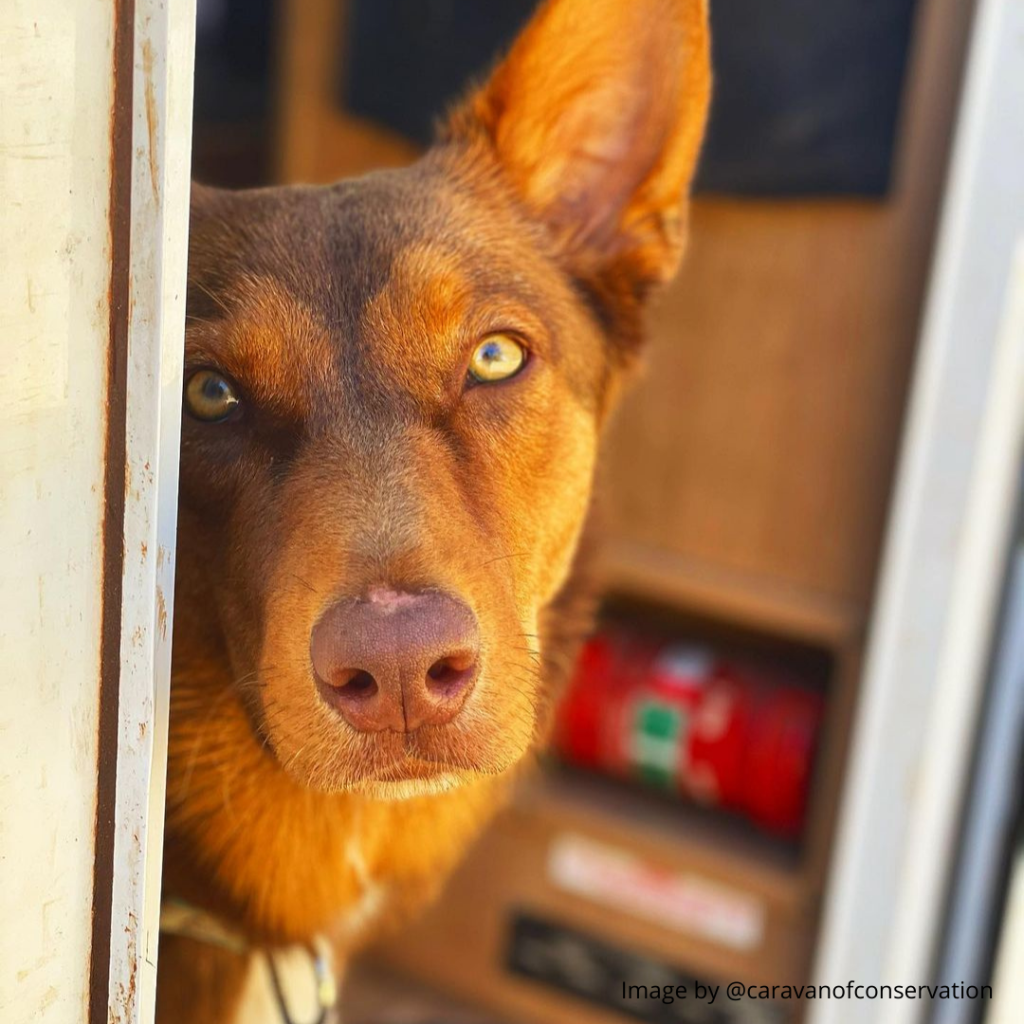
CAMPING WITH YOUR DOG: HEALTH AND SAFETY
For some dog parents, a trip away is incomplete without their furbaby. Camping with your dog can be stressful for both of you.
Sometimes, it’s not as easy as just loading your dog into the back seat and just motoring off, especially if you will be traveling long distances or plan to be away from home for a long period of time.
It is important to prepare your pet for the trip and most importantly to ensure the health and safety of your furry best mate. We have put together some health and safety hints and tips for taking your pet on a camping trip.
Dog health and medical preparation
Although we hope your dog is in tip-top health throughout this adventure, it is always best to ensure the health of your pet beforehand and to always expect the unexpected.
If your dog is not healthy enough for a trip away it would be best to not take them with you and arrange alternative arrangements for their care.
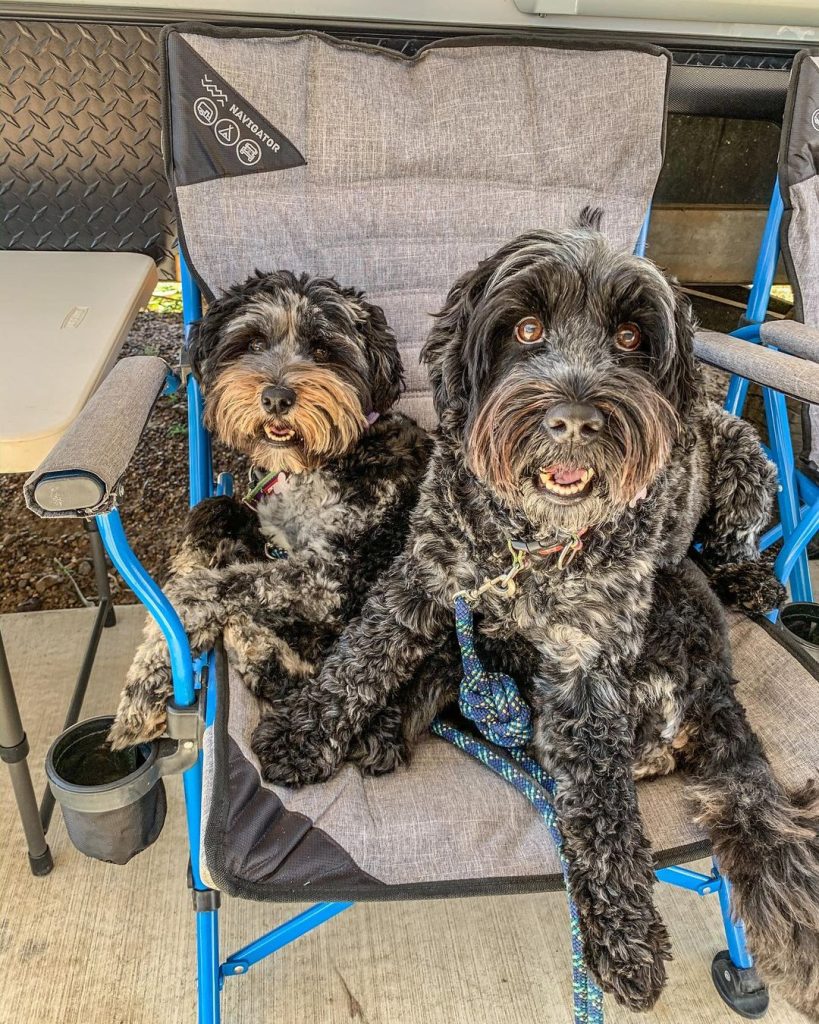
Vet Support
Research e-vets and what physical vets and 24hr vets will be close by. If you are planning some time away from your dog, what doggy day-cares are close by and book them in advance – especially during peak season.
Medical support
As your pooch will be exposed to a few more risk factors than at home, it’s a good idea to learn some doggy first aid as well as how to properly and safely remove ticks. This is especially important if you will not have any vets close by.
Get a check-up
Before going camping with your dog, be sure to reserve a check-up appointment with your local vet before you depart. Especially if your dog has never camped before and your trip is over a longer period of time. As you will be in the great outdoors your dog will be exposed to many more parasites and disease. Ensure you get all necessary medications, vaccinations, parasite prevention, and deworming. This is a requirement for most parks, so remember to carry proof of this with you.
If your dog is not well or has a chronic illness, it may be best to not take him along with you. Ask your vet what they would recommend.
Grooming
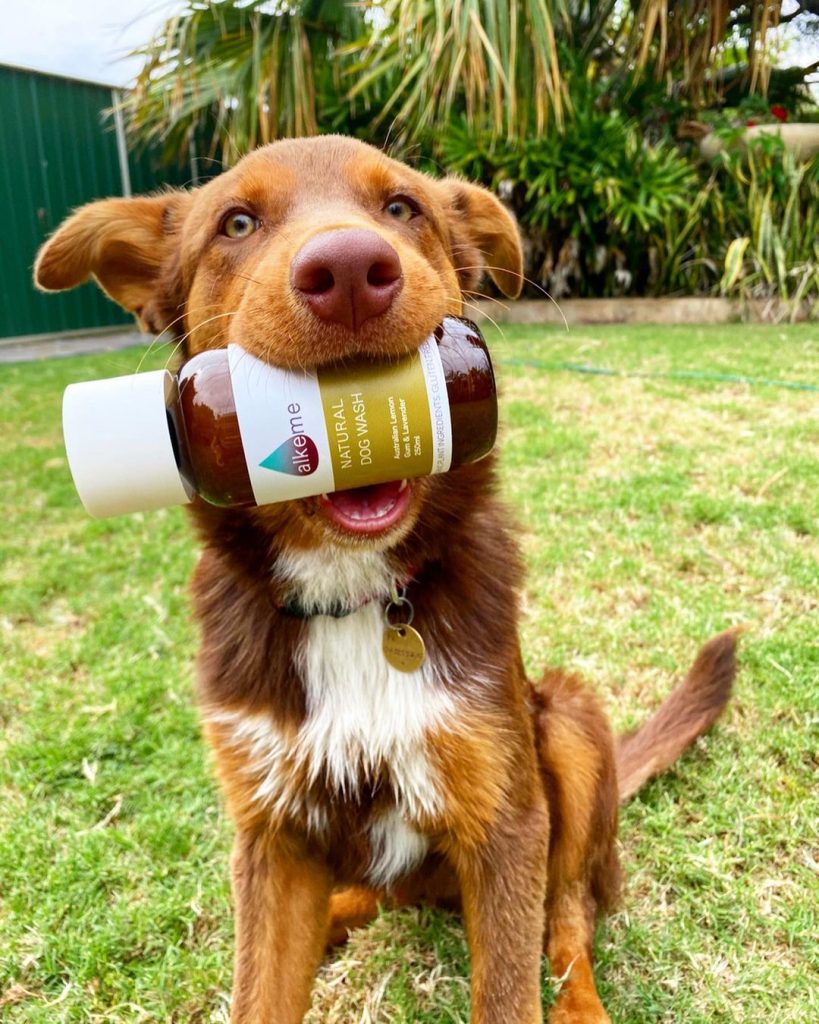
Ensure your dog is groomed for the trip. A good nail and hair trim could be beneficial. Especially if they have a longer coat, this will help to stay cool in warmer weather and prevent fur from getting matted.
Be mindful of extreme temperatures
Throughout the duration of camping with your dog, ensure your dog remains at the right temperature. Put simply, if it’s cold keep your furry friend warm and if it’s hot keep them cool.
Dogs do not cope as well as we do with heat. In Australia, overheating can occur rapidly and can be fatal. Darker dogs or dogs with a lot of fur will heat up quicker than others. Never leave your dog alone in a vehicle on warm days, even with an open window. Always make sure your dog has access to a cool shady spot and that there is always plenty of fresh drinking water, even when on the road. Use a digital thermometer to monitor your pet’s temperature. If your dog has a temperature of 40 degrees or higher is an indication of overheating. To prevent overheating monitor your dog for the following:
- Weakness
- Excessive Panting
- Heavy breathing
- Disorientation
- Bright red tongue
- Dry gums
- Agitation
- Restlessness
If you fear that your pooch may be overheating, get him to a good (preferably air-conditioned) spot right away. Give him a bowl of cold water. Apply a wrapped ice pack to their groin area and continue taking their temperature until they have cooled down. Should symptoms worsen, or if your dog is lethargic, unwilling to move or is having trouble breathing, take him to an emergency veterinarian right away, as this could indicate heat stroke
If it’s chilly, ensure there is a warm spot for your dog to curl up in or some warm layers to wear.
Keep your pooch hydrated
Especially in hot weather! Do not base this on activity levels. Just by being in the outdoors would mean that your dog would require more water. Monitor water intake and always make sure your dog has access to cool, clean and freshwater. If it is quite hot or you are participating in high-energy activities you can add extra electrolytes to your dog’s water. You can get these from your local vet. Take a water bottle and a collapsible water bowl to keep your dog hydrated.
Dog First-aid kit
Be sure to always carry a pet-friendly first-aid kit with you when traveling and participating in outdoor activities. You can buy one here or you could put one together yourself with the assistance of your vet. Keep these items in a separate easy to carry bag.
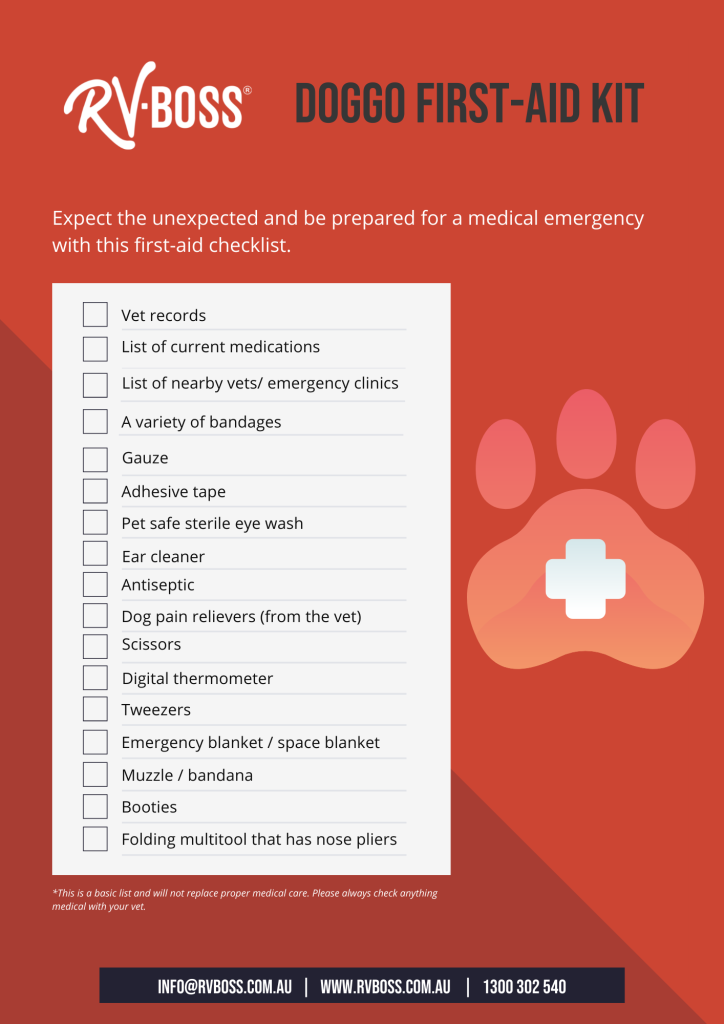
Safety – it’s a jungle out there!
We want our pets to have the most enjoyable time and keeping them out of harm’s way is the best way to provide a fun trip for both you and the fur children.
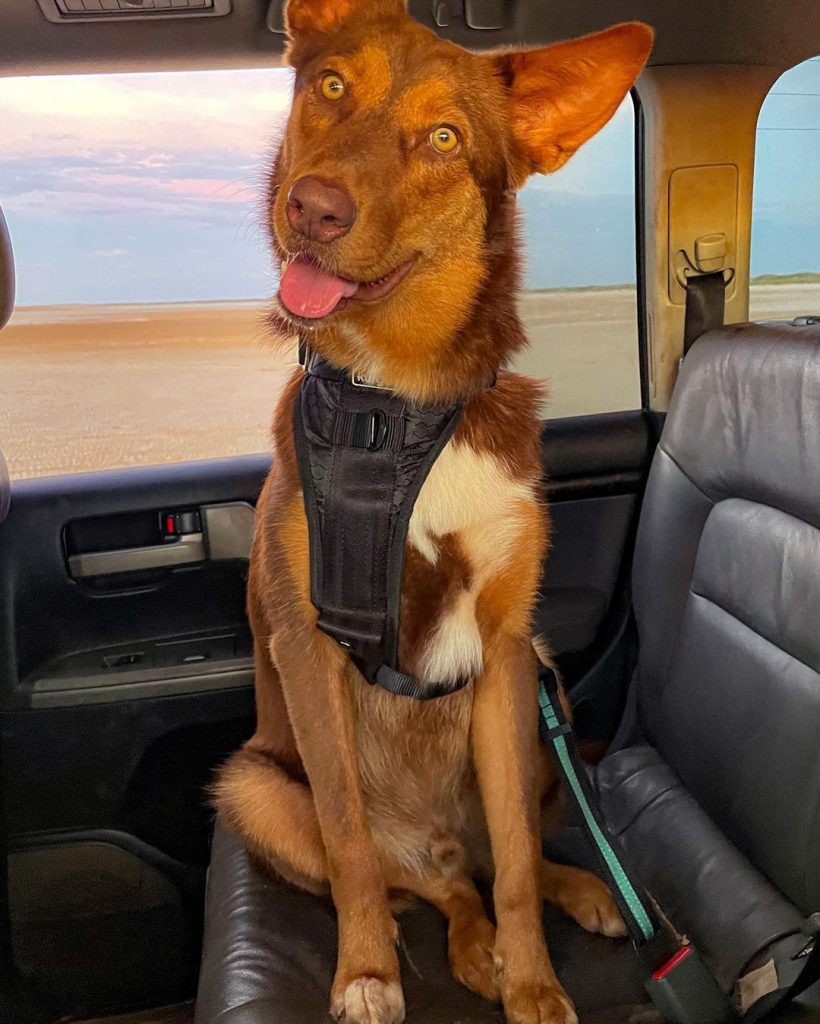
Keep your dog secure at all times
This is a requirement for most campgrounds, except for off-leash dog areas, and is the best way to keep your dog safe. It is especially important to keep your dog leashed when introducing them to the park and on their first walks. Dogs can get distracted by new environments and keeping them leashed is the best way to keep them safe. Even well disciplined ones.
When at your campsite you can secure your dog in a fenced off area/playpen or bring along a ground stake and long rope/lead. This will give your pup the opportunity to have some freedom while remaining secure – and you chill out.
Keep aware of your dog
Even if your dog is obedient, other dogs and people can act otherwise. This means constantly monitoring them in dog play areas, at the campsite and during all activities. You should especially never leave your dog in the car.
When you’re away

When camping with your dog, If you decide to partake in a non-pet-friendly activity away from your campsite, ensure you find someone to look after your doggo.
Look for nearby doggy day care centres or pet sitters. Websites like Pawshake can help you find a suitable dog sitter or dog walker via their website or app. They cover Western Australia, Tasmania, Queensland and everywhere in between!
Paw Patrol
Your dog’s paws may seem tough, but they are sensitive to things like hot pavements; broken glass and sharp rocks; salt-melting ice; ticks and pests and other debris. Check them and protect them where needed.
Watch out for wildlife
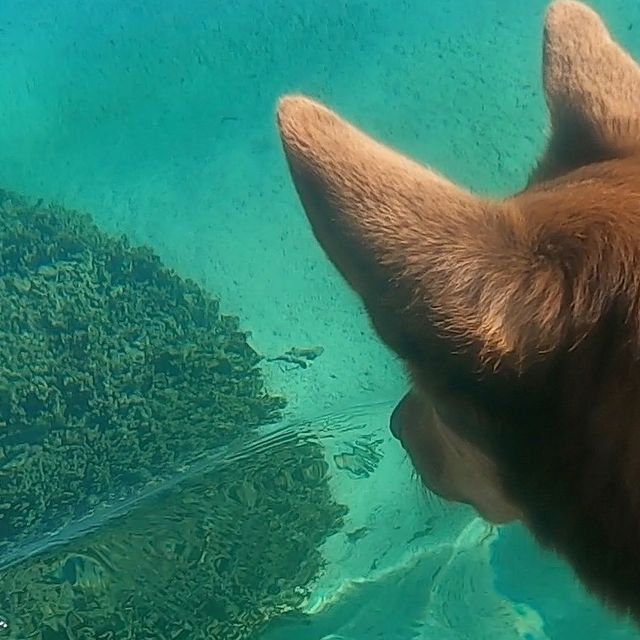
This includes both animals and plants. Be aware of your surroundings and what dangerous animals may be around as well as poisonous allergy causing plants. Research local flora to identify any poisonous plants. Never let your dog eat any plants or drink from stagnant water sources as well as swim in unfamiliar lakes, ponds or rivers that could be infected by blue-green algae. Be sure to not leave the dog’s food dish out, so as to not attract any unwelcome guests.
We hope these tips will help you and your family enjoy a safe, happy, and relaxing holiday with your pets along to share in the fun. If you are ever uncertain of anything or have any concerns about your dog’s well being be sure to contact your local vet.
For more hints and tips for camping with your dog and a printable doggo packing list click here.
Have any other health and safety tips for when camping with your dog? Pop them in the comments section below!
Share all your pawesome doggo camping experiences with us through social media to feature on our channels.




